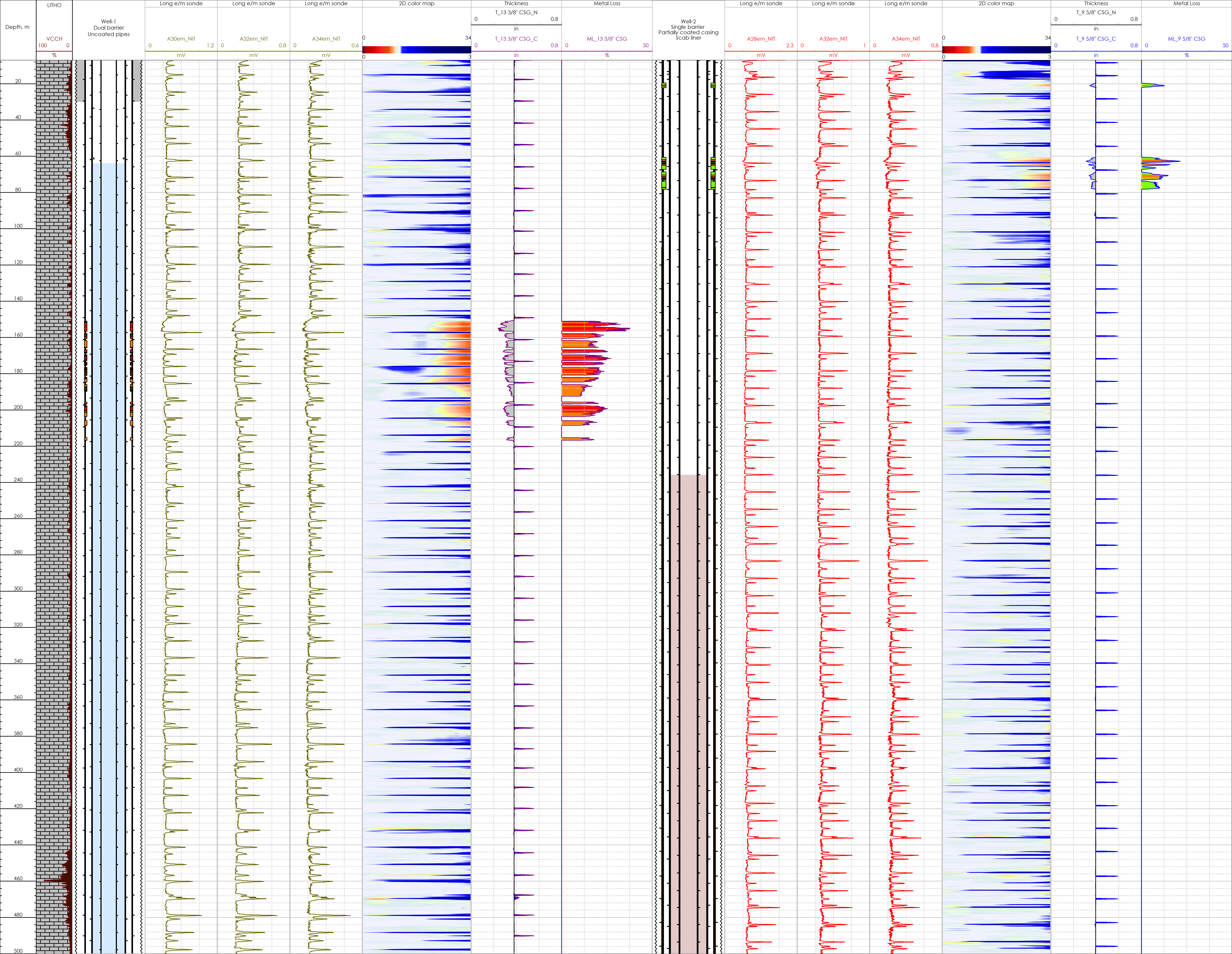Integrity Challenge
It is important to have a good cement bond in the annulus, for example by using a multistage packer and having adequate centralization. External coating on the inner pipe will lessen the risk of corrosion migration from the outer pipe to the inner pipe. This is especially key if the outer pipe has poor cement quality or no cement and is exposed to a corrosive aquifer. Multiple barrier failure can lead to catastrophic consequences such as an oil leak to surface which could result in damage to personnel, the environment, the asset and company reputation.
Corrosion Logging Result
One example of a less than optimal external coating design on the outer casing in one field is shown below:
External coating on casing was introduced to the oil industry in the beginning of 2000. Therefore, all wells which were drilled before this will have no external coating. Most of the wells were completed with dual barriers across the upper section due to total losses during the drilling phase and poor cement quality. Corrosion logging was conducted in a number of wells with this completion design in 2012-2013. The log data indicated that most of the wells had corrosion on the outer casing across an interval of 150-230 m. As a result of the logging data the client changed the completion design to a single barrier across the upper section. The outer casing was externally coated from 100 m to the casing shoe therefore protecting the casing from corrosion across the more aggressive corrosive zones. After 5-6 years from the completion date a number of wells were logged as part of a corrosion monitoring program and to check the efficiency of the external coating. The log data showed the following results: almost 80% of the logged wells had corrosion above the coated pipes at an interval of 20-80 m i.e., 20-30 m above the coated the area. It was evident that due to the potential difference between the coated and uncoated areas, corrosion had migrated from 150-80 m and was now concentrated over the smaller uncoated interval which would significantly increase the rate of corrosion in this area. This decreased the lives of the wells drastically as the casing pressure test in some wells failed after 5 years and scab liners had to be installed.
All case studies
Looking for more information?
Get in touch with us and our representative will get back to you
Contact Us



